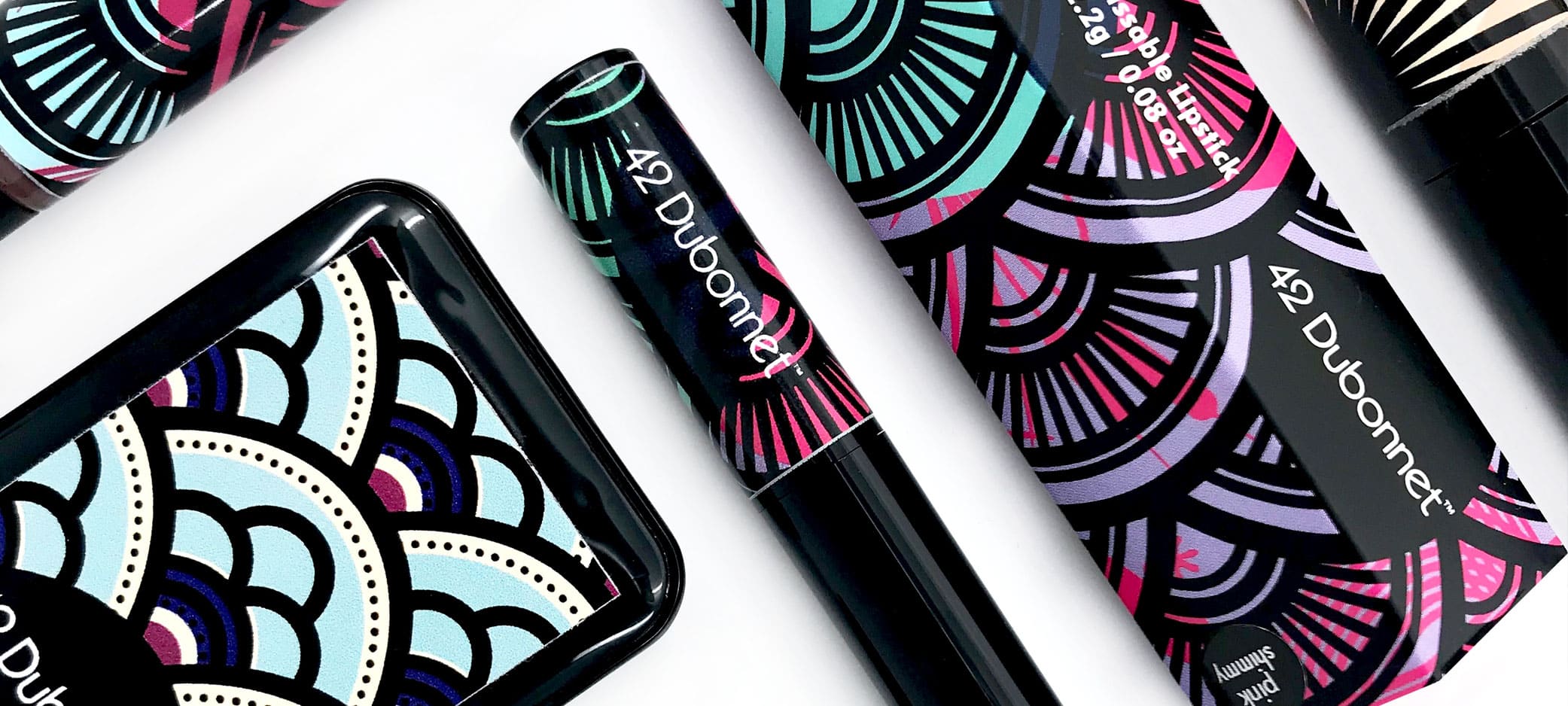Your packaging is one of the key things that sets you apart from other beauty brands. Hiring a package designer is one of the best investments you can make from your beauty business because they take your vision for your packaging and bring it to life.
Types of packaging
The first type is the primary packaging. This is the layer of packaging that touches your product, like a lipstick tube, shampoo, makeup compact, skin cream tube, or perfume bottle. The main purposes of the primary packaging, also known as the primary component, are to protect and preserve the product and to provide the functionality to use the product. When you look for primary components, keep these 2 purposes in mind. You want to make sure that your primary component keeps your product in prime condition for as long as possible, and that it is functional and easy to use.
The second type of packaging is the secondary packaging or the box that contains your primary packaging. This could be a box containing a lipstick tube, skin cream, or a perfume bottle. It could also be a box or bag designed to contain multiple products. The main function of the secondary packaging is to appeal to your customers through branding. Keep this in mind when looking for secondary packaging.
When do you need to find a different manufacturer for your product and packaging components?
Now that you’ve learned about the different types of packaging, it’s time to find your packaging components. These include the primary component, or the container for your product, and the secondary packaging, or the box your product comes in.
For primary components (the container):
- You want different containers than those provided by your manufacturer
For secondary packaging (the box):
- You don’t like the packaging provided by your product manufacturer
- You are using multiple manufacturers for private label manufacturing
Step 1 to find your primary components: Research and talk to manufacturers
When deciding which manufacturer to work with for primary components, you first need to find out their minimum order quantity and the price per unit you are buying. Once you determine if their components are in your desired price range, ask how long they have been in business and how long they plan to continue making that component. Some additional questions to ask include:
- What’s your MOQ? (Minimum Order Quantity?)
- What is your price per unit?
- How long have you been in business?
- How well is this unit selling?
- Do you print or silkscreen on the packaging?
If they’ve been in business for a long time, it’s more likely that their business will stick around in the future. You also want to make sure they’re planning to continue making that unit for a long time because you don’t want to be forced to find an alternative in the future. Ask them if the unit is selling well. If they say yes, it’s likely that they will continue selling it in the future.
Step 2: Determine if the component will work with your product
If you decide you want to try out a primary component, the next steps are to:
- Get 2-3 samples
- Send 2 samples to your manufacturer(s) so they can…
- See if their machines can fill them
- See the shelf life of the product
Step 3: Designing and putting information on the primary component
Design can be:
- Hot-stamped (gold or silver)
- Silk-screened (each color is printed separately, looks more vibrant, costs more, fewer colors)
- Printed (colors are printed at the same time, colors tend to be more muted)
- Labeled
- Some manufacturers do this, but the options are limited
- You may be able to send your designed labels to the manufacturer. Call to find out.
- Have your packaging designer design the label and send it to a printer like Sticker You.
Before moving forward with your primary component printing or labeling, get printed samples. Most primary and secondary printers will send you a sample of their work. Some charge and some don’t. If they do, I highly recommend you pay the fee to see the samples. This can be helpful to see both their quality and to see examples of secondary finishes are available to you.
Steps to finding your secondary packaging:
Now that you’ve understood the best way to find your primary components, it’s time to find your secondary packaging. Explained below are the three main steps that’ll help you do this with ease.
Step 1: Talk to manufacturers
When looking for a manufacturer for your secondary packaging, you want to call them and ask them these questions:
- What are your MOQ (Minimum Order Quantity) and price per unit?
- What do I need to do to get the artwork to you?
- What is the turnaround time to get the boxes after I send the artwork?
- Do you charge for printing different versions of my design?
Then you’ll want to ask the turnaround time to get the boxes once you send them your artwork. Also, ask if they charge for printing different versions of the same design. For example, you may be selling 3 different lipstick shades. The design will remain the same but the wording will change. Some manufacturers charge for this, while others will do it for free.
Step 2: Designing the box
The next step is actually designing the box. Follow the steps below:
- Get samples from the printers
- Request an estimate
- Include costs for:
- Plate charge (if you’re providing your own dieline)
- Sample box
- Matchprint
- 3D printed mockup (if available)
- Include costs for:
- Get the dieline (blueprint for the box)
- Either ask the manufacturer to send it to you or have your designer make it
- The manufacturer usually charges $100-$250 to have a custom dieline (plate charge)
- If your designer made the dieline, send it to the manufacturer
- Ask for them to send you a sample box (blank mockup)
- You send them your print-ready artwork
- Ask them to send you a matching print so that you can check that all the colors look good
- Have them send you a 3D mockup
Step 3: Follow FDA requirements for labeling packaging
Last but not least, make sure to visit http://bit.ly/FDAbeautylabeling for guidance on labeling within the FDA’s boundaries.
- The FDA considers your website an extension of your labeling and it should have all the required information as well
- Even if you use a bag, you still need to include a card with all of the information on it
The Advantages of Working With a Package Designer
A package designer is also instrumental when you’re working with packaging manufacturers.
5 must-haves when evaluating packaging designers are:
- They specialize in the beauty industry
- They specialize in package design
- You like their design style
- They have a track record of success
- They have a strategic process
You want to work with someone who is an expert in your niche and in packaging design specifically because they will be able to help you stand out from your competition. It’s also important that you connect with some of their work because that lets you know that they are likely to create something you like.
Takeaway
On the way to finding the right packaging for your beauty product, consider hiring a package designer to assist you with your endeavors. Their assistance will help you to speed up the process as well as gain an insightful view into what types of packaging will work best for your product.
Ready to start your own beauty product but don’t know how to get started
Learn How to Launch a Beauty Product covers every aspect of starting a beauty business, from creating a solid foundation and getting funding to manufacturing, branding, sales, and marketing. This guided approach keeps you on track and makes the process feel less overwhelming. To learn more about turning your product ideas into reality, sign up for our newsletters and read more about the course here.

Crème de Mint has specialized in cosmetic packaging design for makeup brands for more than 15 years. Our CPG branding agency knows how to create compelling, craveworthy designs that can help your brand stand out! Book a call today to chat with us about your packaging design.



